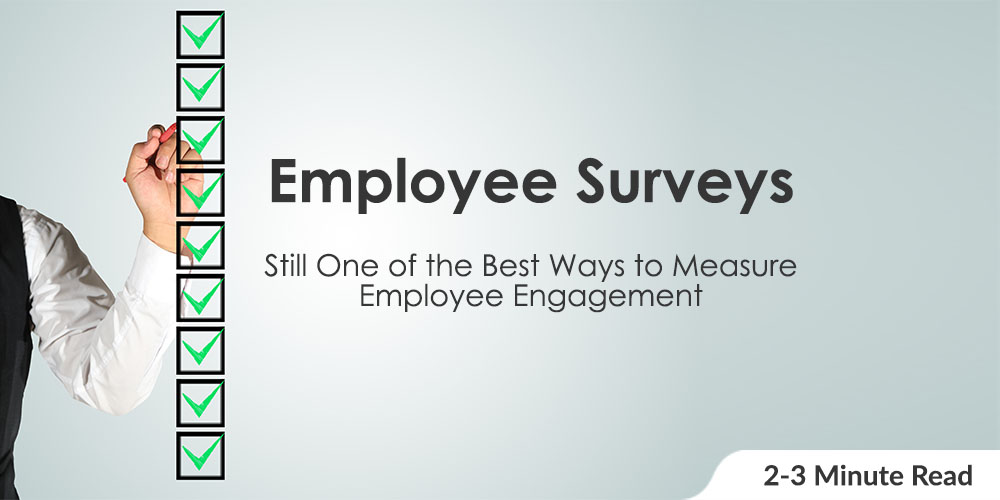Employee Surveys – Still One of the Best Ways to Measure Employee Engagement

There are multiple ways in which companies currently track employee engagement, but despite being an “oldie”, employee engagement surveys still appear to be one of the best ways of measuring engagement.
According to the Harvard Business Review (HBR), it would be a mistake to discard and disregard employee surveys for the following three reasons:
1. Employee engagement surveys can be good predictors of behavior
HBR have found that employees who choose not to participate in engagement surveys still provide meaningful, albeit indirect,engagement data. In HBR’s experience, people who don’t respond are 2.6 times more likely than those who do, to leave the organization within six months– why would someone bother to respond,anyway, when they’re not invested in the company any longer (or to begin with)? That is not to say that all staff who don’t respond will leave the organization or that they are necessarily disengaged; however, lack of participation might offer some valuable insights.
2. Surveys offer staff the opportunity to feel heard
Investing in employee engagement software or an employee engagement app, while frequently – and relevantly – making use of its functionality, sends the message that you care what your staff have to say, while offering them a platform to communicate their views in ways that might not usually be possible. Even when not all staff’s suggestions are adopted, it makes a difference when they know that they work for an organization that values input from everyone.
To this end, management’s transparent feedback on employee surveys is greatly encouraged. Why did management address certain aspects, but not others? How did the survey results contribute to new policies or procedures? What impact did employees’ feedback have?And if you want to turn the response rate up a notch, try using fun incentivization strategies, like having leaders coming to work dressed in a get-up of their team’s choice when hitting the 100% response-rate mark, as was the case at Facebook.

3. Surveys are vehicles for behavior change
If you want to see improved participation, ask for it… or rather, prompt it. HBR found that when people commit to something in an employee engagement survey (say, after being asked whether they will attend an upcoming conference to show support to the company) the likelihood of them actually following through tends to increase. Here’s an example:
“On our engagement survey at Facebook, we often try out new questions with different samples of people. In one recent survey, we asked 30% of our people whether or not they were personally committed to improving their experience working here. We weren’t trying to influence their behavior, but they ended up being 12% more likely than their peers to request a curated list of additional resources and tools to help them become more engaged at Facebook — and that was true whether their original answer was yes or no.”
Employee survey apps and software can give you far more information and positive output than merely the data you ask for directly, particularly when making use of employee engagement platforms that offer wider engagement functionality. With Ezzely, as an example, companies have a multitude of opportunities to improve engagement by deploying surveys directly to staff’s phones via our app, incentivizing their participation through entries into raffles, or expanding the platforms through which they get to voice their views – from collegial recognition to an activity feed. Ezzely is a holistic employee engagement platform that aims to offer sufficient flexibility so that companies can tailor its functionality in creative ways to suit their unique organizational needs.
Visit Ezzely’s website and set up a demo to see how we can help you to facilitate engagement in your company.
